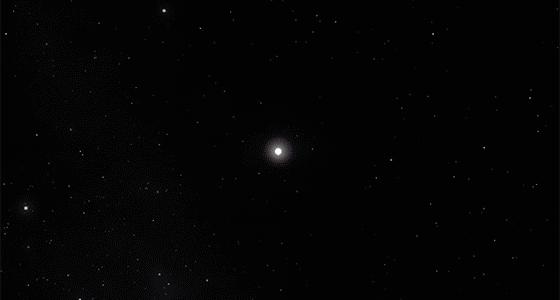NICER collaboration, NASA astronaut reveal size of most massive neutron star, highlight Space Station science

Credit: NASA / Walt Feimer
A team of scientists used a telescope on the International Space Station to measure the size of PSR J0740+6620 (J0740, for short), the most massive known neutron star. NASA’s Neutron star Interior Composition Explorer (NICER) has captured unprecedented detail from this stellar remnant to learn more about matter in its core, which is on the threshold of collapsing into a black hole.
The NICER team will introduce their groundbreaking findings at a press conference during the 2021 APS April Meeting. NASA astronaut Christina Koch will join them to talk about how researchers use the space station as a science platform.
From pencils to pulsars
“Matter makes up everything we can see in the universe, from pencils to people to planets. In the heart of a neutron star, it’s on the verge of collapsing into a black hole,” said Cole Miller, an astronomy professor at the University of Maryland, College Park and a member of the NICER team.
“We can’t recreate those conditions on Earth, but scientists can study them from a distance by measuring the masses and sizes of neutron stars and calculating how dense they are.”
Miller will share the results from one of two groups that independently calculated the size of J0740.
Neutron star squeezability
“Our measurements of J0740 help constrain the squeezability of matter in neutron star cores, or at what density neutrons, one of the atomic building blocks, break down into smaller particles,” said Anna Watts, a professor of astrophysics at the University of Amsterdam.
Watts will share the results from the other independent team that calculated J0740’s size.
Combined with data from other neutron stars and multimessenger observations, the J0740 results herald a new age of neutron star science.
FEATURED TALKS
NICER Constraints on the Neutron Star Equation of State (E03.3, E03.4)
4:39 p.m. – 5:06 p.m. CDT, Saturday, April 17, 2021
Thomas Riley
Livestream:
Abstract: http://meetings.
5:06 p.m. – 5:33 p.m. CDT, Saturday, April 17, 2021
Cole Miller
Livestream:
Abstract: http://meetings.
PRESS CONFERENCE
Register for the press conference to be held on Zoom at 10:00 a.m. CDT, Saturday, April 17, 2021.
Speakers:
- Zaven Arzoumanian (NICER Science Lead, NASA’s Goddard Space Flight Center)
- Cole Miller (Professor of Astronomy, University of Maryland)
- Anna Watts (Professor of Astrophysics, University of Amsterdam)
- Sanjay Reddy (Professor of Physics, University of Washington)
- Christina Koch (NASA Astronaut)
Media Contacts:
Claire Andreoli
Public Affairs Officer
NASA’s Goddard Space Flight Center, Greenbelt, Md.
[email protected]
(301) 286-1940
Jeanette Kazmierczak
Science Writer
NASA’s Goddard Space Flight Center
[email protected]
Press Conference Schedule
Register for each press conference separately at the links below. Press conferences will be recorded and made available upon request.
Saturday, April 17
10:00 a.m. CDT Measuring Neutron Star Squeezability
NICER collaboration, NASA astronaut reveal size of most massive neutron star, highlight Space Station science
Register
12:00 p.m. CDT On the Pulse of Pulsars and Polar Light
Reimagined telescopes may fill the void left by Arecibo’s collapse
Register
Sunday, April 18
10:00 a.m. CDT The Future of Particle Accelerators Is Here
Behind the scenes of the Electron-Ion Collider, green accelerators that waste no energy, and chiral magnetic effect results debuting this summer
Register
12:00 p.m. CDT Scientists May Detect Signs of Extraterrestrial Life in the Next 5 to 10 Years
Telescope launching this autumn could spot biosignatures on other planets within three days
Register
Monday, April 19
11:00 a.m. CDT The Fate of the Planet
Unconventional takes on pandemics and nuclear defense could protect humanity from catastrophic failure
Register
###
About 2021 APS April Meeting
Complimentary registration is available to journalists and public information officers for the express purpose of gathering and reporting news and information from the meeting. All prospective attendees must register to access the virtual meeting platform: https:/
Staff reporters, freelance writers, and students are welcome. Those who have not previously attended APS meetings as press or do not directly receive the APS journals tip sheet may submit a request for APS press credentials by completing the form on this page: http://info.
About APS
The American Physical Society is a nonprofit membership organization working to advance and diffuse the knowledge of physics through its outstanding research journals, scientific meetings, and education, outreach, advocacy, and international activities. APS represents over 55,000 members, including physicists in academia, national laboratories, and industry in the United States and throughout the world. Society offices are located in College Park, Maryland (Headquarters), Ridge, New York, and Washington, DC.
Media Contact
APS Press Office
[email protected]
Original Source
https:/




